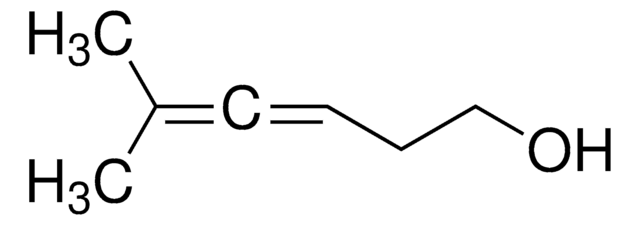774103
Copper
nanopowder, 60-80 nm particle size (SAXS), ≥99.5% trace metals basis
Synonym(s):
Copper nanoparticles
Sign Into View Organizational & Contract Pricing
All Photos(2)
About This Item
Empirical Formula (Hill Notation):
Cu
CAS Number:
Molecular Weight:
63.55
EC Number:
MDL number:
UNSPSC Code:
12352302
PubChem Substance ID:
NACRES:
NA.23
Recommended Products
Quality Level
Assay
≥99.5% trace metals basis
form
nanopowder
resistivity
1.673 μΩ-cm, 20°C
particle size
60-80 nm (SAXS)
bp
2567 °C (lit.)
mp
1083.4 °C (lit.)
density
8.94 g/mL at 25 °C (lit.)
application(s)
battery manufacturing
SMILES string
[Cu]
InChI
1S/Cu
InChI key
RYGMFSIKBFXOCR-UHFFFAOYSA-N
Application
Copper nanopowders have seen use in biomedical applications as an antimicrobial ; as plasmonic materials and as a component of reforming catalysts.
Preparation Note
Partially Passivated: < 5% oxygen added by weight
Signal Word
Danger
Hazard Statements
Precautionary Statements
Hazard Classifications
Aquatic Acute 1 - Aquatic Chronic 1 - Flam. Sol. 2 - Self-heat. 1
Storage Class Code
4.2 - Pyrophoric and self-heating hazardous materials
WGK
WGK 2
Flash Point(F)
Not applicable
Flash Point(C)
Not applicable
Choose from one of the most recent versions:
Already Own This Product?
Find documentation for the products that you have recently purchased in the Document Library.
Customers Also Viewed
Chan; G.H.; et al.
Nano Letters, 7, 1947-1952 (2007)
Vizcaino; A.J.; et al.
International Journal of Hydrogen Energy, 32, 1450-1461 (2007)
Jayesh P Ruparelia et al.
Acta biomaterialia, 4(3), 707-716 (2008-02-06)
The antimicrobial properties of silver and copper nanoparticles were investigated using Escherichia coli (four strains), Bacillus subtilis and Staphylococcus aureus (three strains). The average sizes of the silver and copper nanoparticles were 3 nm and 9 nm, respectively, as determined
Seiko Ishida et al.
Proceedings of the National Academy of Sciences of the United States of America, 110(48), 19507-19512 (2013-11-13)
Copper is an essential trace element, the imbalances of which are associated with various pathological conditions, including cancer, albeit via largely undefined molecular and cellular mechanisms. Here we provide evidence that levels of bioavailable copper modulate tumor growth. Chronic exposure
R Squitti et al.
Neurology, 67(1), 76-82 (2006-07-13)
To assess whether serum copper in Alzheimer disease (AD) correlates with cognitive scores, beta-amyloid, and other CSF markers of neurodegeneration. The authors studied copper, ceruloplasmin, total peroxide, and antioxidants levels (TRAP) in serum; beta-amyloid in plasma; and copper, beta-amyloid, h-tau
Our team of scientists has experience in all areas of research including Life Science, Material Science, Chemical Synthesis, Chromatography, Analytical and many others.
Contact Technical Service







